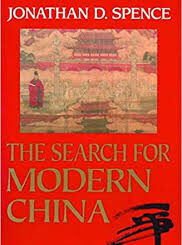The Book of Sushi by Kinjiro Omae & Yazuru Tachibana
Either you love it, or you hate it. Sushi, that is. Raw fish, seaweed, sticky rice, soy sauce, and wasabi. I have a brother-in-law from the Midwest who positively gags at the very thought of such weirdness, food that isn’t even cooked! . . . and of course I’m always threatening to make him eat sushi when he visits, a small cultural war that we play.
Personally, I love the stuff. I’m an addict, I can gobble up huge amounts of nigiri sushi, whether it’s fresh raw tuna, octopus, salmon, clams, or sea bass – I’m a true democrat when it comes to fresh-caught fish from the sea. Equally delicious, and less expensive in restaurants, is nori-maki, seaweed rolls – California rolls are my particular downfall, with the rice on the outside and inside a filling of crab and avocado. I’m not sure if I can explain precisely why I like sushi so much, whether it’s the texture or the taste, or the fiendishly hot green Japanese horseradish, wasabi, that works like a heat-seeking missile straight to the brain. Suffice it to say that for a fan, sushi is wonderful. Raw and wild to the taste buds, and also an aesthetic pleasure to sit and eat, watching the itamae-san, the sushi master chef in his white, martial art-looking costume, doing his command performance at the counter.
The only thing I don’t like about sushi is that it’s so expensive, at least in the quantities that my wife and I tend to consume. Which is why it’s a worthwhile investment of time to learn to make your own, creating a private sushi feast any time you like, even if you’re living deep in the heart of Mid-America, far from the oriental corners of the world. I was lucky; I learned how to make sushi in a one-day workshop held in a Japanese restaurant in San Francisco, and I think this is probably the best way, to learn in person from an expert rather than from a book. However, there is one book I’ve found that does a good job of clearly explaining the different steps of sushi preparation, the gorgeously photographed The Book of Sushi by Kinjiro Omae and Yuzuru Tachibana, published in Tokyo and New York, with a foreword by the famous silver flute player, Jean-Pierre Rampal.
Sushi takes time to prepare, which is its greatest drawback for the home chef. Usually, if I’m going to do a sushi dinner for friends, I start around three in the afternoon in order to get the rice properly cooked and cool enough to use. But as long as you have The Book of Sushi handy, and a bamboo roller, the recipes themselves are not so difficult to figure out. Getting the rice just right is the most challenging part, at least for me, since I happen to live in the Rocky Mountains at 7000 feet, making any kind of rice a challenge. But hey, even bad batches of sushi make tasty eating.
Like most home sushi chefs, I concentrate on the seaweed rolls rather than nigiri sushi with its need for a variety of very fresh fish. Once you get the basic idea of rice and seaweed you can put just about anything inside. My favorite invention is a seaweed roll that combines smoked salmon, avocado, asparagus, and slivers of red pepper.
Sushi tastes like the ocean, not a taste for everyone. But if you’re an addict, you’ll be happy as a clam if you give The Book of Sushi a try. Along with recipes and the basic method of preparation, the authors have written a history of sushi, a glossary of terms, even how to order sushi in a restaurant and figure out the bill.
What more can any fish loving person want? Irasshai!
- National Epilepsy Day 2023:Common Signs And Symptoms - November 17, 2023
- Top 10 Cosmetic Packaging Designers in the USA - April 12, 2023
- Luxury Website Designers: The Ultimate Guide to Creating a High-End Website - April 10, 2023


